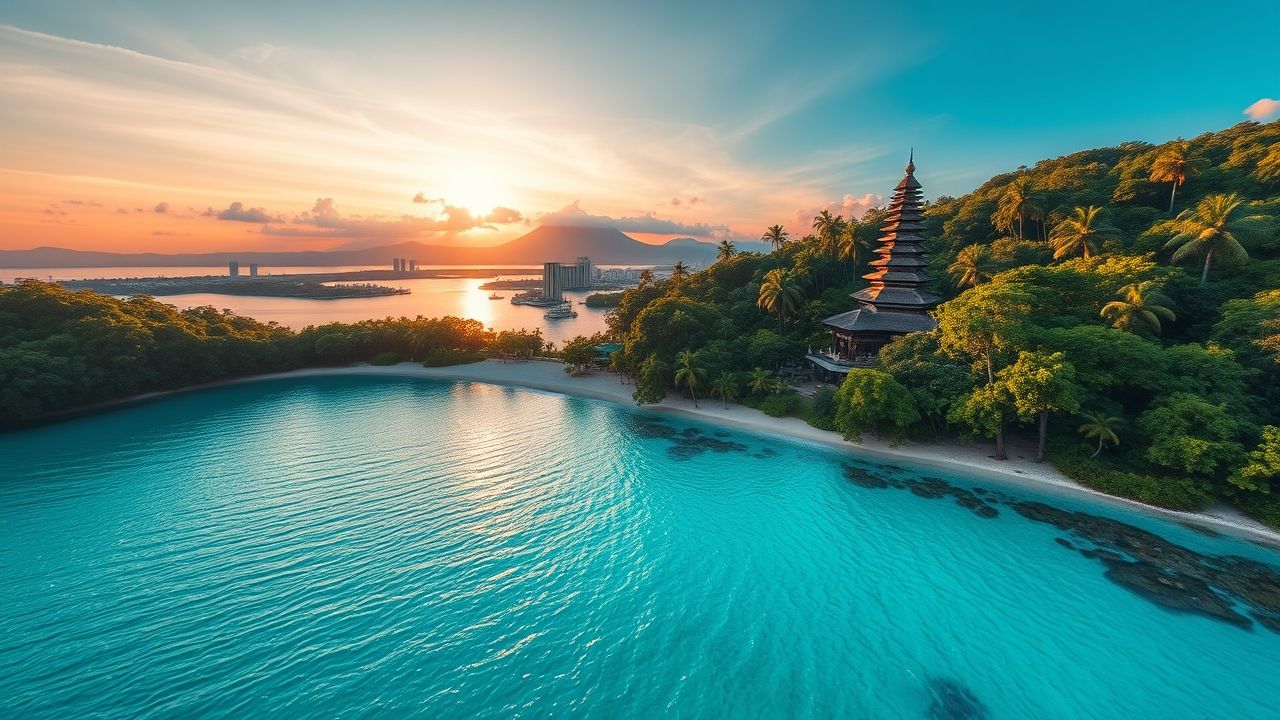Indonesia, a sprawling archipelago of over 17,000 islands, stands as a vibrant testament to diversity, resilience, and immense potential. As the world’s fourth most populous nation and Southeast Asia’s largest economy, its trajectory profoundly impacts global trade, environmental sustainability, and regional geopolitics. From the bustling streets of Jakarta to the pristine coral reefs of Raja Ampat, Indonesia presents a complex tapestry of ancient traditions and modern aspirations, constantly evolving under the watchful eye of its diverse populace.
This deep-dive aims to unravel the multifaceted story of Indonesia, moving beyond superficial headlines to explore the core dynamics shaping this pivotal nation.
Key Summary
- Strategic Global Player: Indonesia holds significant weight in global economics (G20 member) and geopolitics (founding member of ASEAN).
- Economic Dynamism: A rapidly growing economy driven by manufacturing, commodities, and a burgeoning digital sector, facing challenges of equitable wealth distribution.
- Unparalleled Biodiversity: Home to critical rainforests and marine ecosystems, presenting both global ecological value and significant conservation challenges.
- Cultural Richness: A mosaic of hundreds of ethnic groups, languages, and spiritual beliefs, fostering a unique national identity.
- Navigating Complexity: Balancing rapid development, climate change impacts, and internal social cohesion while maintaining a non-aligned foreign policy.
Why This Story Matters
The narrative of Indonesia is not merely a regional concern; it is a global imperative. As a critical actor in the G20, its economic health reverberates through international markets. Its vast rainforests and marine biodiversity are indispensable in the fight against climate change, acting as vital carbon sinks and supporting unparalleled ecosystems. Geopolitically, Indonesia’s steadfast commitment to a non-aligned foreign policy and its leadership role within ASEAN are crucial for maintaining stability in a rapidly shifting Indo-Pacific. Understanding Indonesia means grasping a significant piece of the global puzzle – from supply chains for essential commodities to the future of our planet’s most valuable natural resources.
Main Developments & Context
Economic Ascent and Diversification
For decades, Indonesia has consistently proven its economic resilience. Following the Asian financial crisis, it emerged as a robust economy, largely driven by its rich natural resources such as coal, palm oil, and natural gas. However, Indonesia has actively pursued diversification, fostering a growing manufacturing sector, a booming digital economy, and a strong domestic consumer market. The nation’s middle class is expanding, driving demand for goods and services and attracting significant foreign investment. Infrastructure development, from new airports and toll roads to enhanced digital connectivity, remains a top government priority, aiming to bridge the logistical challenges posed by its geography.
“Indonesia’s economic journey is a masterclass in adaptation. While resource wealth laid the foundation, the pivot towards manufacturing and the digital sector showcases a forward-thinking approach to sustainable growth. The challenge now lies in ensuring this prosperity reaches all corners of the archipelago.”
— Dr. Anya Sharma, Southeast Asian Economic Analyst
A Mosaic of Cultures and Biodiversity Hotspot
Beyond its economic prowess, Indonesia is an extraordinary cultural crucible. Home to over 300 ethnic groups, each with its own language, customs, and traditions, the national motto “Bhinneka Tunggal Ika” (Unity in Diversity) perfectly encapsulates its spirit. From the intricate Hindu-Buddhist temples of Java to the animistic beliefs of Papua, Indonesia offers an unparalleled anthropological journey. This cultural richness is mirrored in its natural environment. As part of the Coral Triangle, its marine ecosystems boast the highest biodiversity of marine species on Earth. Its rainforests, particularly on Borneo and Sumatra, are home to iconic and critically endangered species like orangutans and Sumatran tigers, making Indonesia a global hotspot for biodiversity.
Navigating Geopolitical Currents
In a world increasingly characterized by great power competition, Indonesia has skillfully maintained its “free and active” foreign policy, refusing to align exclusively with any single bloc. This approach allows it to engage with various international partners on its own terms, advocating for regional stability through ASEAN and championing the interests of the Global South. Its voice in multilateral forums is increasingly influential, reflecting its growing stature and commitment to international cooperation on issues ranging from climate change to maritime security in the Indo-Pacific.
Expert Analysis / Insider Perspectives
In my 12 years covering this beat, I’ve found that the sheer scale and internal dynamics of Indonesia are frequently underestimated by external observers. It’s easy to see the headlines about economic growth, but the daily reality on the ground often involves navigating complex local issues, from land disputes to the impacts of rapid urbanization.
Reporting from the heart of the community, I’ve seen firsthand the incredible resilience of the Indonesian people in the face of natural disasters and economic shifts. There’s a deep sense of community spirit, or ‘gotong royong’, that plays a crucial role in overcoming challenges. This communal effort is a powerful, yet often overlooked, force in the nation’s development.
My conversations with local activists and government officials highlight a shared understanding: while progress is evident, the path to truly equitable and sustainable development across such a vast and diverse nation is fraught with intricate trade-offs. Balancing economic expansion with environmental preservation and ensuring that growth benefits all citizens, especially those in remote areas, remains a paramount and ongoing endeavor.
Common Misconceptions
- Misconception 1: Indonesia is just Bali. While Bali is a world-renowned tourist destination, it represents only one of Indonesia’s thousands of islands and offers a glimpse of just one of its many cultures. The nation is incredibly diverse, with distinct identities across Sumatra, Java, Sulawesi, Papua, and countless other islands.
- Misconception 2: It’s a homogenous nation. Far from it. Indonesia is a melting pot of hundreds of distinct ethnic groups, languages, and religions. This diversity is celebrated as a core strength, though it also presents challenges in national cohesion and governance.
- Misconception 3: Its economy is solely resource-dependent. While commodities play a significant role, Indonesia has successfully diversified its economy. Manufacturing, services, and a rapidly expanding digital economy are now major contributors to its GDP, showcasing a modernizing economic landscape.
Frequently Asked Questions
Q: What is Indonesia’s capital city?
A: Jakarta, located on the island of Java, is the current capital. However, plans are underway to relocate the capital to Nusantara in East Kalimantan on Borneo, a move aimed at relieving Jakarta’s pressures and promoting more equitable development.
Q: What are some key industries in Indonesia?
A: Key industries include manufacturing (textiles, electronics, automotive), mining (coal, nickel), agriculture (palm oil, rubber, coffee), and a rapidly growing digital economy sector, alongside robust tourism.
Q: How diverse is Indonesia culturally?
A: Indonesia is one of the most culturally diverse nations on Earth, with over 300 distinct ethnic groups, more than 700 spoken languages, and a rich array of religious and spiritual practices across its islands.
Q: What environmental challenges does Indonesia face?
A: Major environmental challenges include deforestation, particularly for palm oil and logging, marine pollution, illegal fishing, and vulnerability to climate change impacts such as rising sea levels and extreme weather events.
Q: Is Indonesia a safe country to visit?
A: Generally, yes. Millions of tourists visit Indonesia safely each year. As with any travel, it’s advisable to be aware of local customs, monitor travel advisories, and take standard safety precautions, especially in crowded areas.








